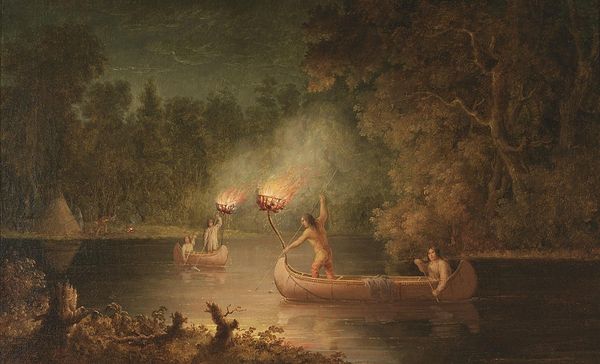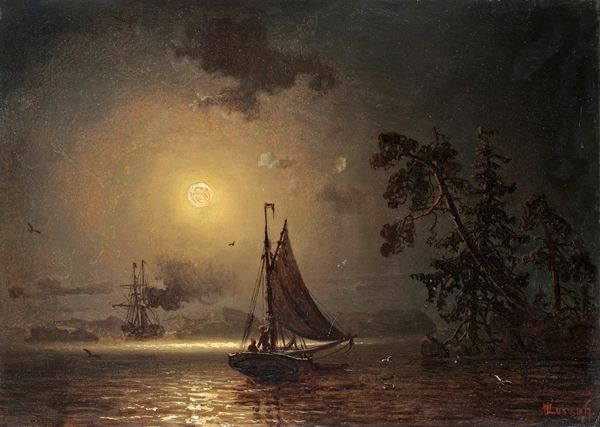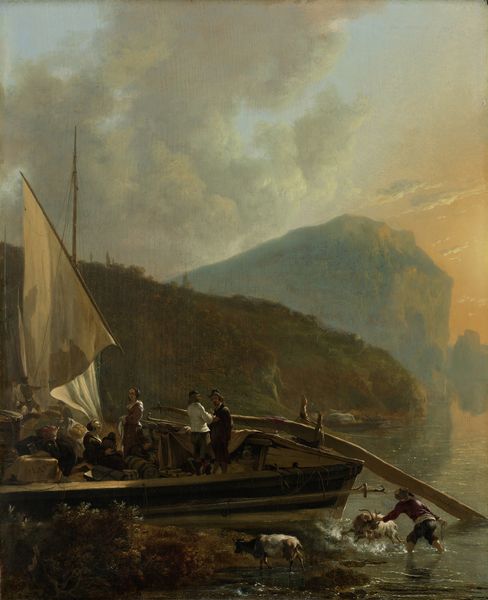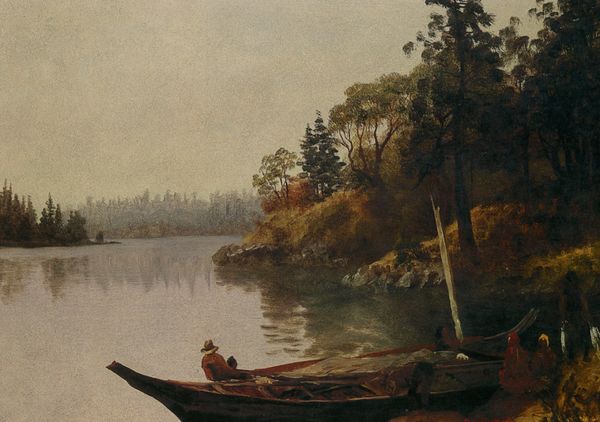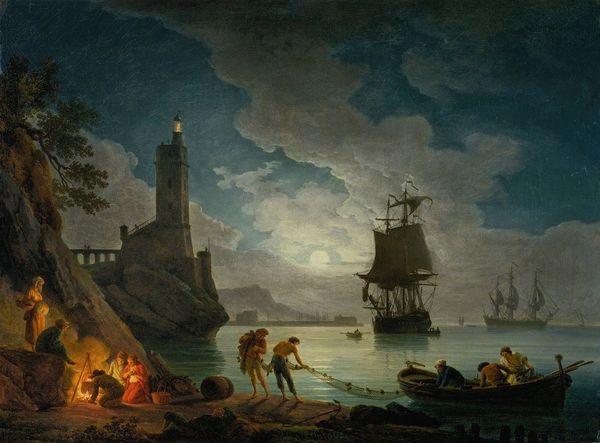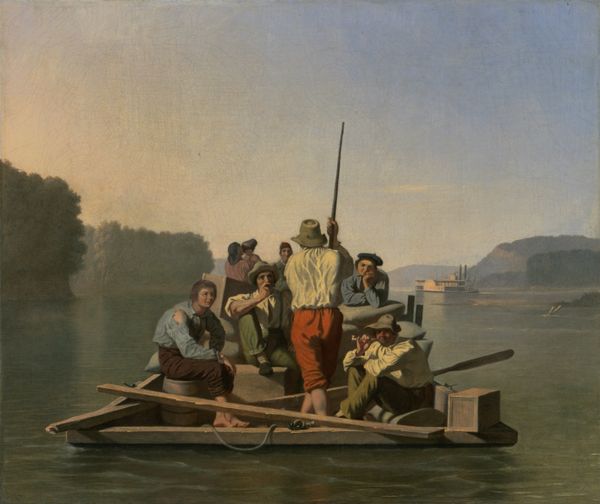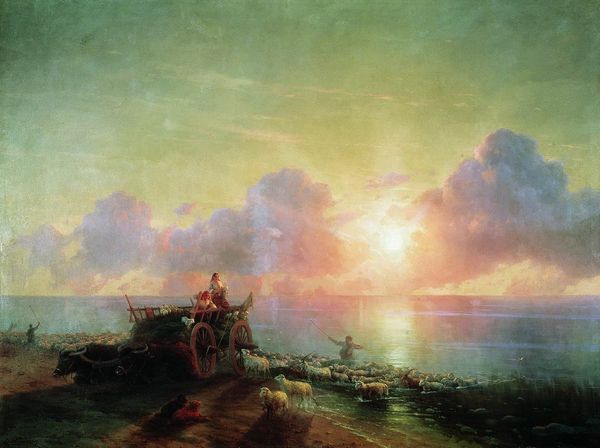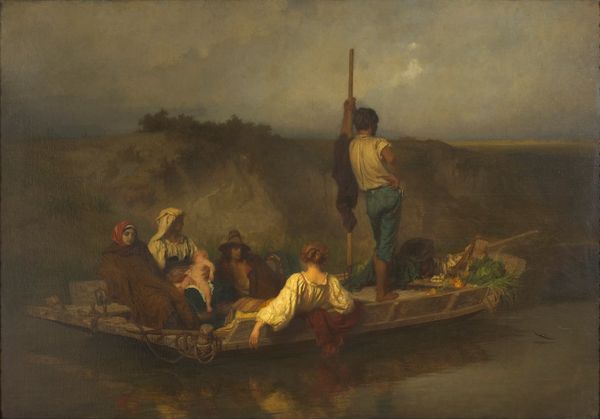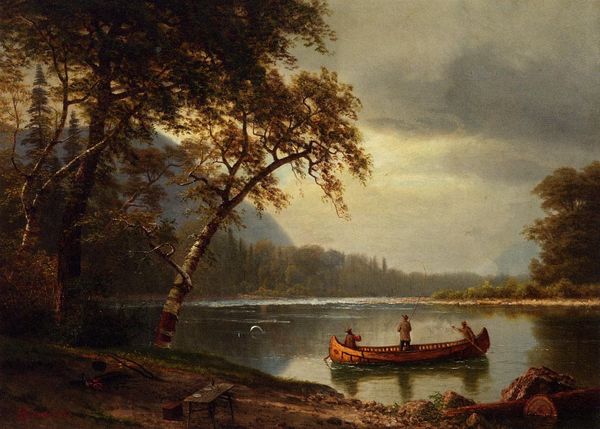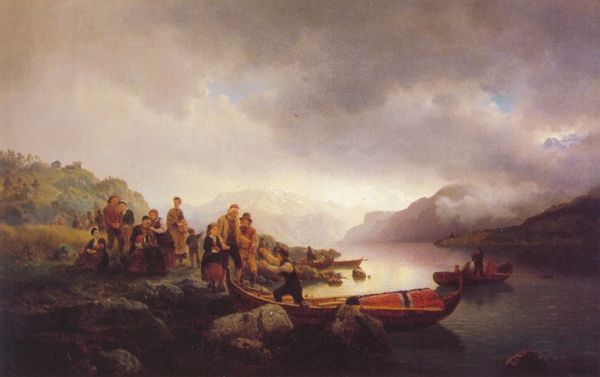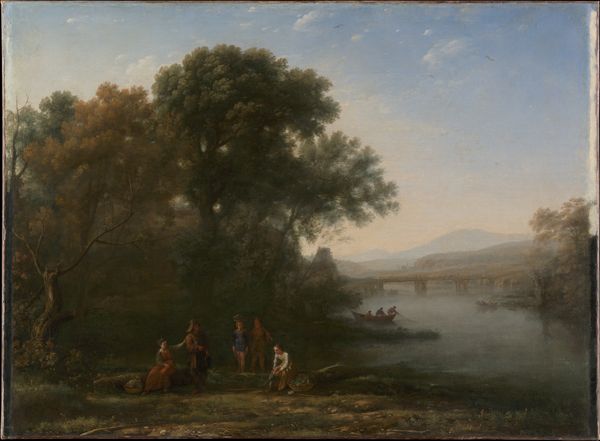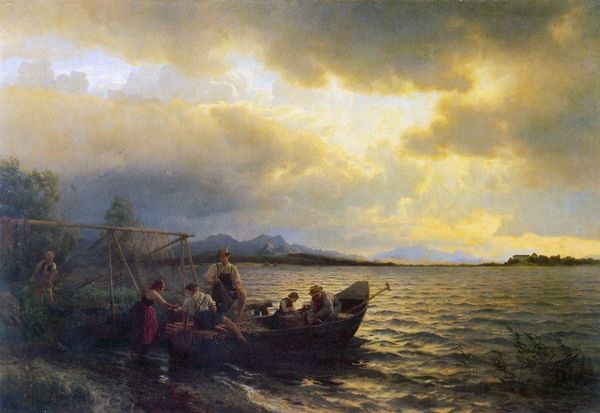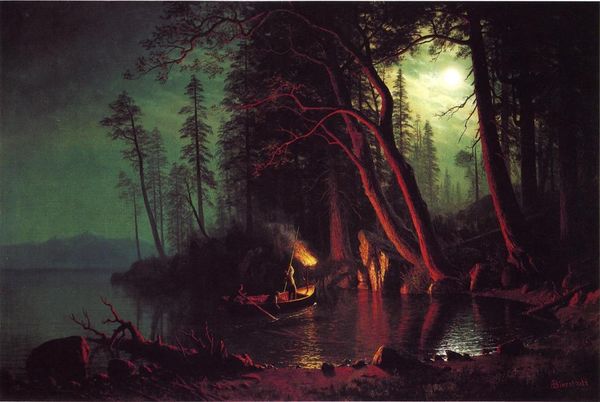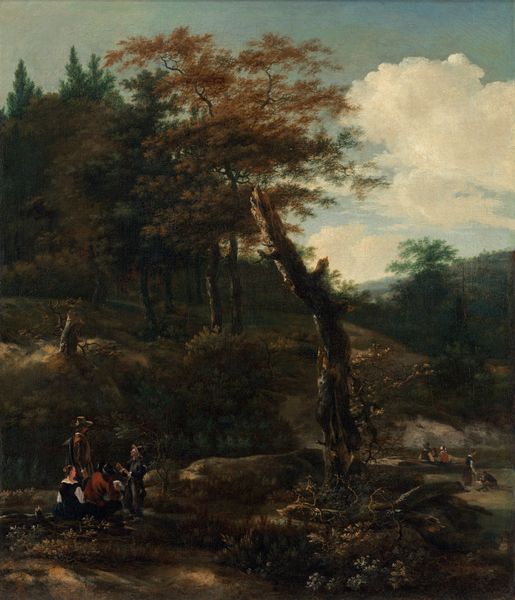
painting, plein-air
#
night
#
sky
#
painting
#
plein-air
#
landscape
#
eerie mood
#
figuration
#
romanticism
#
genre-painting
#
realism
Copyright: Public domain
Editor: Hans Gude's painting, simply titled "Fishermen," really pulls you in. It feels quite dramatic, almost theatrical with that fiery glow against the dark night sky and water. What can you tell me about this piece? Curator: It’s interesting how you see the theatricality. The painting definitely plays with light and shadow in a way that Romanticism often did, to evoke powerful emotions and a sense of the sublime. Consider, too, that Gude, as a landscape painter, was making explicit statements about Norwegian identity. What do you think of how Gude represented the family, considering ideas of nationhood? Editor: That's a great question. I see the family as this close unit, self-sufficient and connected to nature. It feels very idealized. Do you think it's fair to say that artists, back then, depicted the lives of regular folks with an element of romanticizing it for propaganda purposes? Curator: "Propaganda" might be too strong a word. Rather, artists participated in constructing a national narrative. These depictions reinforce certain values like the virtue of rural life, family unity, and a connection to the land. Who was consuming these images? What stories did these patrons want to see reflected back at them about themselves? Those are important questions when we examine art as part of a broader social fabric. Editor: So, the painting wasn’t *just* about fishermen; it was about building an idea of what it meant to be Norwegian! That’s fascinating. I hadn’t considered the role of the viewer and how art like this was used in its time. Thanks, that really clarifies the importance of context. Curator: And thanks to you for drawing out these key social and historical points from the work!
Comments
No comments
Be the first to comment and join the conversation on the ultimate creative platform.
